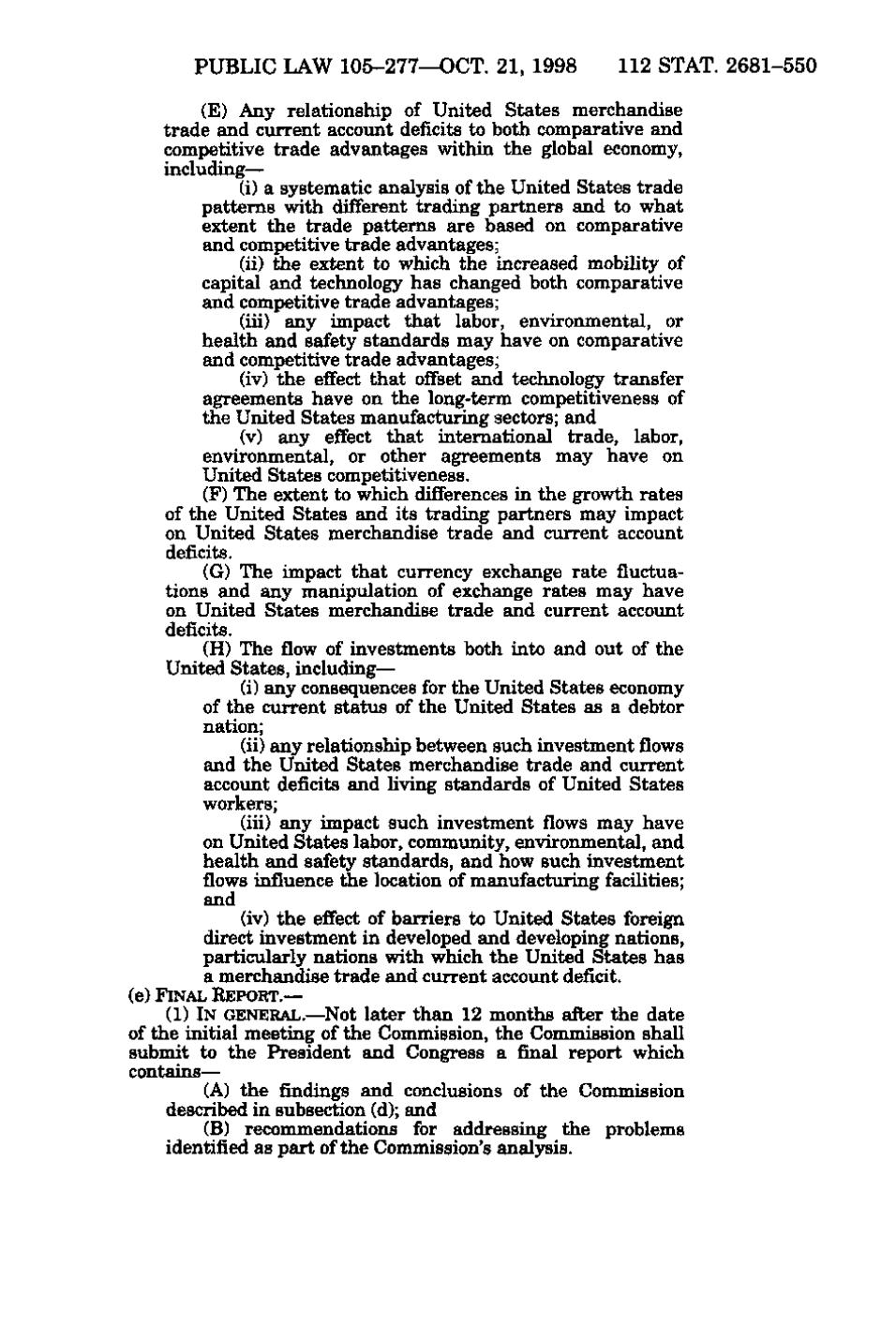PUBLIC LAW 105-277—OCT. 21, 1998 112 STAT. 2681-550 (E) Any relationship of United States merchandise trade and current account deficits to both comparative and competitive trade advantages within the global economy, including— (i) a systematic analysis of the United States trade patterns with different trading partners and to what extent the trade patterns are based on comparative and competitive trade advantages; (ii) the extent to which the increased mobility of capital and technology has changed both comparative and competitive trade advantages:; (iii) any impact that labor, environmental, or health and safety standards may have on comparative and competitive trade advantages; (iv) the effect that offset and technology transfer agreements have on the long-term competitiveness of the United States manufacturing sectors; and (v) any effect that international trade, labor, environmental, or other agreements may have on United States competitiveness. (F) The extent to which differences in the growth rates of the United States and its trading partners may impact on United States merchandise trade and current account deficits. (G) The impact that currency exchange rate fluctuations and any manipulation of exchjmge rates may have on United States merchandise trade and current account deficits. (H) The flow of investments both into and out of the United States, including— (i) any consequences for the United States economy of the current status of the United States as a debtor nation; (ii) any relationship between such investment flows and the United States merchandise trade and current account deficits and living standards of United States workers; (iii) any impact such investment flows may have on United States labor, community, environmental, and health and safety standards, and how such investment flows influence the location of manufacturing facilities; and (iv) the effect of barriers to United States foreign direct investment in developed and developing nations, particularly nations with which the United States has a merchandise trade and current accoiuit deficit. (e) FINAL REPORT. — (1) IN GENERAL.—Not later than 12 months after the date of the initial meeting of the Commission, the Commission shall submit to the President and Congress a final report which contsdns— (A) the findings and conclusions of the Commission described in subsection (d); and (B) recommendations for addressing the problems identified as part of the Commission's analysis.
�
